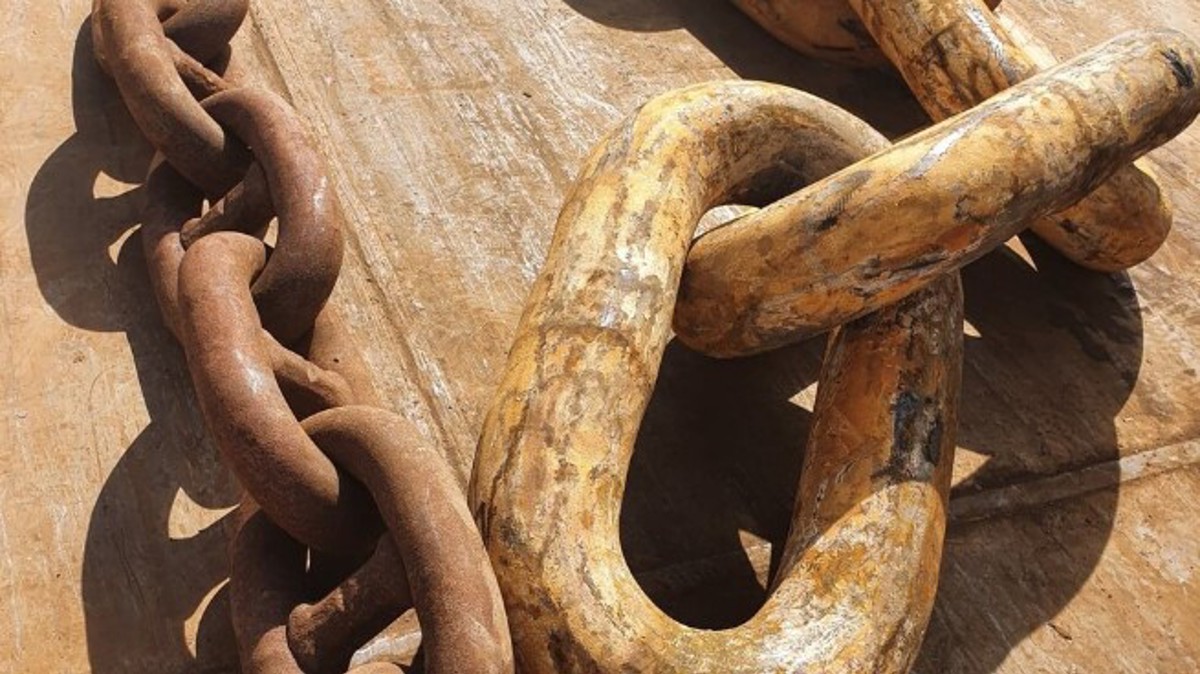Near miss: uncontrolled movement of mooring chain
- Safety Flash
- Published on 19 January 2021
- Generated on 2 July 2025
- IMCA SF 03/21
- 2 minute read
Jump to:
There was a sudden and uncontrolled movement of very heavy mooring chain during chain laying operations.
What happened?
A vessel was laying a 170mm diameter bottom chain from a suction anchor towards an FPSO. When the chain end was approaching, the shark jaw was engaged onto the chain to remove tension, in order to enable handling of the chain end from its chain locker.
The last few chain links of the bottom chain then moved uncontrolled over the chain handling unit and rolled/dropped on deck, under its own weight, in between the chain lifter and the winch hangar. The bosun was located close to where the chain dropped and moved away when he noticed the uncontrolled chain movement starting.

Image: www.offshore-energy.biz
What went wrong?
The circulation pump on the chain handling unit tripped, causing the chain lifter to loose its holding force, and hence the chain catenary forward of the unit pulled the tail end over.
Causal factors
- This was a new vessel with as yet, a lack of full implementation of required safety systems.
- There was insufficient job safety preparation and risk management in place.
- There was inadequate understanding of the failure modes for the system.
- The vessel’s generic procedures & job safety analyses were not re-visited with respect to project-specific loads and factors.
- The chain handling unit was not included in the vessel anchor handling and tow manual.
Additionally, it was noted that there were no physical barriers in place for working around equipment.
Lessons learned
- Implement additional physical barriers on deck.
- Update vessel documentation including SJAs and manuals.
- Assess need for additional technical barriers on chain handling unit and circulation pump (including upscaling of pump and set-up on alarm).
- Formalise training and familiarisation.
Related Safety Flashes
-
IMCA SF 26/20
4 September 2020
-
-
IMCA SF 29/18
21 December 2018
-
IMCA Safety Flashes summarise key safety matters and incidents, allowing lessons to be more easily learnt for the benefit of the entire offshore industry.
The effectiveness of the IMCA Safety Flash system depends on the industry sharing information and so avoiding repeat incidents. Incidents are classified according to IOGP's Life Saving Rules.
All information is anonymised or sanitised, as appropriate, and warnings for graphic content included where possible.
IMCA makes every effort to ensure both the accuracy and reliability of the information shared, but is not be liable for any guidance and/or recommendation and/or statement herein contained.
The information contained in this document does not fulfil or replace any individual's or Member's legal, regulatory or other duties or obligations in respect of their operations. Individuals and Members remain solely responsible for the safe, lawful and proper conduct of their operations.
Share your safety incidents with IMCA online. Sign-up to receive Safety Flashes straight to your email.